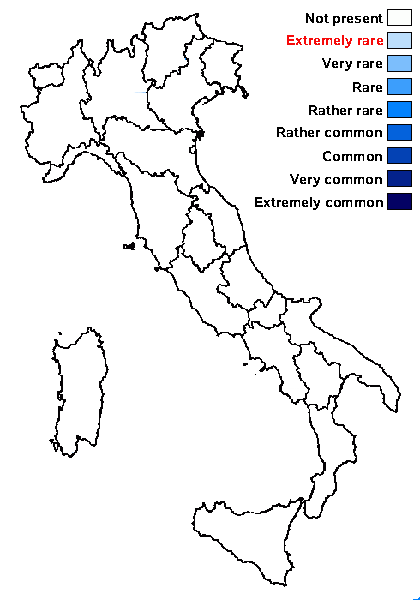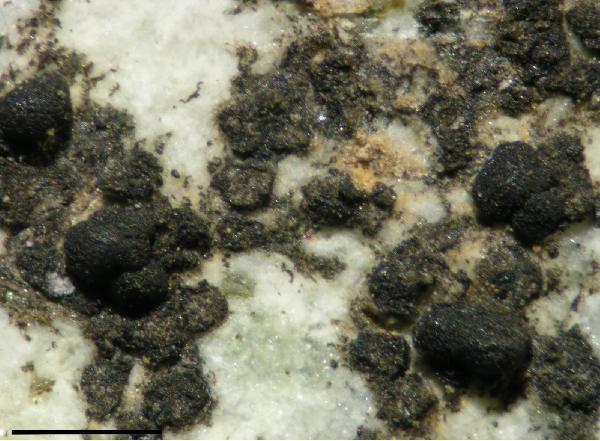Arthonia epimela (Norman ex Almq.) Minks
Verh. Kaiserl.-Königl. zool.-bot. Ges. Wien, 42: 474, 1892. Basionym: Arthonia vagans * epimela Norman ex Almq. - K. svenska Vetensk-Akad. Handl., n. f. 17, no. 6: 56, 1880.
Synonyms:
Distribution:
Description: Thallus inapparent, not lichenized, with hyaline vegetative hyphae immersed in the thallus of Amandinea punctata. Apothecia arthonioid, round, usually single, developing superficially, 0.3-0.5(-0.6) mm across, with a black, markedly convex disc, without a distinct margin. Proper exciple poorly developed; epithecium dark brown, 10-20 µm high, composed of the free tips of paraphysoids; hymenium colourless to pale brown, I+ red, K/I+ blue; hypothecium brown, sometimes with a narrow, darker, cuneate base. Asci 8-spored, narrowly pyriform, semi-fissitunicate, with a large apical dome, a distinct ocular chamber, Arthonia-type. Ascospores 1-septate, hyaline, subclavate, the upper cell rounded, the lower cell longer and narrower, (9-)10-13 x (3-)4-5 µm. Photobiont absent. Spot tests: K-, C-, KC-, P-. Chemistry: without lichen substances.Note: a much misunderstood parasite of mainly saxicolous thalli of Amandinea punctata. Records on other hosts (Lecidella, Lecanora,
Rinodina, crustose Teloschistaceae) most probably refer to other species. To be looked for in Italy.
Growth form: Lichenicolous fungus
Substrata: rocks
Reproductive strategy: mainly sexual
paras Amandinea punctata

Predictive model
Herbarium samples
Growth form: Lichenicolous fungus
Substrata: rocks
Reproductive strategy: mainly sexual
paras Amandinea punctata

Predictive model
| Herbarium samples |


